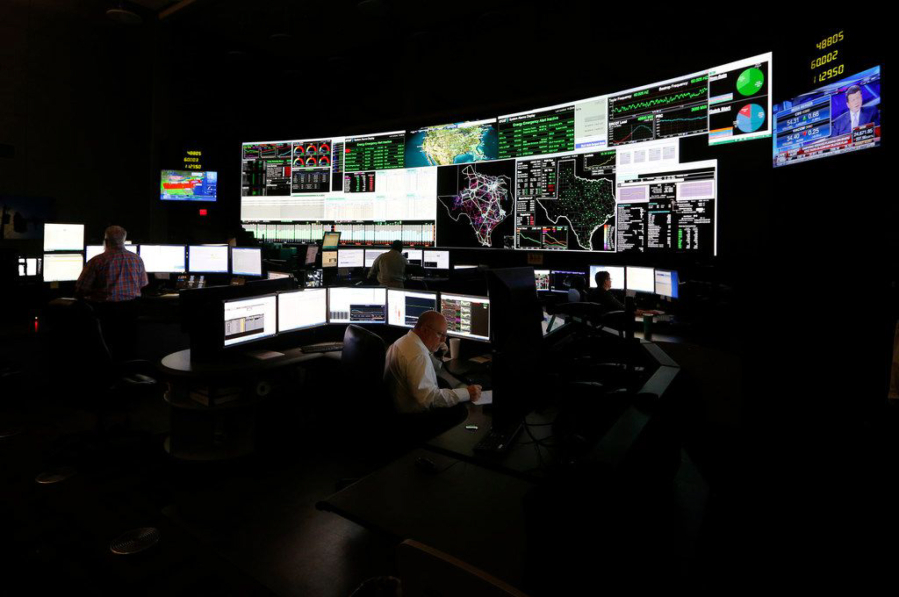Last summer, it was California that suffered through statewide power outages due to searing heat.
This winter, it’s Texas experiencing shutoffs because of extreme cold — but the effects are much more widespread.
An arctic blast hammered the Lone Star State over the Valentine’s and President’s Day weekend, sending temperatures to record lows. Snow covered the state capitol in Austin and even towns in the Rio Grande Valley reported temperatures in the single digits. Some called it the hardest freeze since the 1940s.
With residents turning up the heat in their homes, demand surged and overwhelmed the power grid run by the Electric Reliability Council of Texas, or ERCOT, which oversees the system for about 90 percent of the state. Orders for utilities to shed load to maintain reserve margins were quickly followed by outages that left as many as 4.4 million customers without power.
The cold front has only slightly relented. On Wednesday morning, 2.7 million homes were still blacked out. At least 10 people in the Houston area alone have died due to weather-related incidents.
The outages in Texas have some similarities to last summer’s outages in California — but there’s also some striking differences. Most notably, the scope of the Texas outages is significantly larger.
The outages in California spanned two days. On Aug. 14, about 491,600 customers statewide lost power, including 59,000 in the San Diego Gas & Electric service territory. The next day, about 321,000 were without power across California, including 17,000 in SDG&E’s territory.
The duration was much shorter, too — no more than 2 1/2 hours, opposed to some Texas customers who have reported outages lasting days.
The sheer persistence of the extreme weather offered another similarity. In mid-August, a heat wave settled over nearly all of California for days, stressing the grid statewide and offering no chance to shift load from areas not sweltering to areas that were.
And the heat wave did not just blanket California but spread across the West. About 25 percent of California’s power mix comes from neighboring states, such as Nevada and Arizona. But with their own customers ramping up demand, energy resources from other states shriveled up, exacerbating California’s grid woes.
While the problem in Texas is cold, not heat, the story is familiar. The arctic chill has extended throughout large portions of the U.S. and is not expected to abate for days. The ERCOT reported Wednesday a power emergency in the Midwest meant the grid operator could not import about 600 megawatts of power from that part of the country, enough to power about 120,000 homes during periods of peak demand.
In the months after last summer’s outages, the California Energy Commission, the California Public Utilities Commission and the California Independent System Operator released a root cause analysis. The report did not blame a single cause for the blackouts but pointed to multiple reasons that were made worse by the heat.
For example, the natural gas fleet is one of the workhorses of the California grid but plants do not run as efficiently when the weather is extremely hot and they underperformed last August. Similarly, there was little to no breeze during the the heat wave so generation from wind farms lagged.
At this point, it appears some similar things happened in Texas — only with sub-freezing conditions exacerbating things.
Power-generating sites in Texas are built to withstand hot weather and have not installed the equipment to ward off freezing temperatures like those installed in cold weather locales.
Wind turbines that dot the landscape of West Texas and the Panhandle froze up. Wind accounts for about 23 percent of the power mix in Texas and an official with the ERCOT estimated 16,000 megawatts of renewable generation — most of it wind — were offline Tuesday.
Some critics of renewable energy blamed wind’s lack of production for the outages but it appears just about every power sector fell short. Even a nuclear power plant in south Texas went down for a short time due to icy water.
Of about 45,0000 megawatts of power that was offline at the peak, about two-thirds of the generation was from “thermal” power plants — natural gas, coal and nuclear. Instruments seized up at gas and coal plants and gas wells froze shut, squeezing flows.
Another similarity — just as the outages last August angered Gov. Gavin Newsom, Texas Gov. Greg Abbott was similarly agitated. “The Electric Reliability Council of Texas has been anything but reliable over the past 48 hours. This is unacceptable,” Abbott said Tuesday, no doubt aware that power outages can prove politically fatal for governors, regardless of party.
Gov. Gray Davis of California was ousted in a recall election in large part due to the rolling blackouts during the state’s energy crisis in 2000 and 2001.
The outages represent a blow to the pride Texas takes in calling itself the country’s energy leader, especially after some Lone Star State politicians took jibes at California last August.
The California Independent System Operator, which manages the electric grid for about 80 percent of the state, took to Twitter on Tuesday, asking Californians to help out Texas and other states until the cold snap subsides.
The CAISO asked energy users to consider voluntarily conserving energy in the evening hours by unplugging small appliances and electronics, “reversing your fan blades to produce a gentle updraft” and putting computers in sleep and hibernate modes.
Texas has a separate energy grid than California but officials said the conservation measures can help facilitate energy imports and exports among states across the country.
“It’s always a good idea to conserve, but freeing up supplies for other areas is paramount right now,” said CAISO spokeswoman Anne Gonzales.



